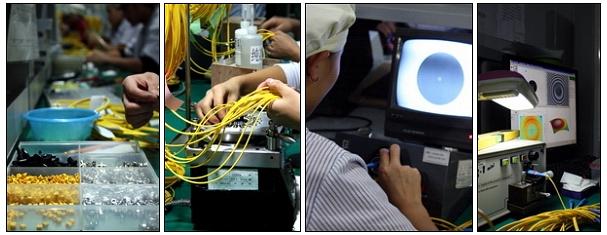Fiber Patch Cord
Fiber patch cord is a type of fiber optic cable that is used to connect one device to another for the purpose of transmitting optical signals. It is also known as a fiber jumper or fiber patch cable. Fiber patch cords are typically used in data centers, telecommunications networks, and other applications where high-speed, high-bandwidth data transmission is required.
Fiber patch cords are designed to be highly reliable and easy to install. They consist of a fiber optic cable with connectors on each end, which can be plugged into the respective ports on the devices being connected. The connectors are typically made of ceramic or metal and are designed to mate securely with the device ports to ensure a stable and low-loss connection.
Fiber patch cords come in a variety of configurations, including different fiber types (single-mode or multimode), connector types (such as LC, SC, ST, or MTP/MPO), and cable lengths. The choice of patch cord will depend on the specific application and the devices being connected.
Fiber patch cords are commonly used to connect devices such as servers, switches, routers, and optical transceivers in data center and telecommunications networks. They are also used in fiber to the home (FTTH) installations to connect the optical network terminal (ONT) to the customer’s equipment.
In summary, a fiber patch cord is a type of fiber optic cable that is used to connect one device to another for the purpose of transmitting optical signals. It is a crucial component in fiber optic networks, allowing for reliable and high-speed data transmission between devices.
There are several different models and types of fiber patch cords available on the market, including:
1. Single-mode patch cords: These patch cords are designed for use with single-mode fiber optic cables, which are used for long-distance applications. Single-mode patch cords typically have a yellow jacket and use connectors such as LC or SC.
2. Multimode patch cords: These patch cords are designed for use with multimode fiber optic cables, which are used for shorter-distance applications. Multimode patch cords typically have an orange jacket and use connectors such as LC, SC, or ST.
3. Armored patch cords: These patch cords have an additional layer of metal armor for additional protection against physical damage. They are commonly used in industrial or military applications.
4. Bend-insensitive patch cords: These patch cords are designed to minimize signal loss caused by bending or twisting of the cable. They use specialized fibers and coatings to maintain optical signal integrity even when bent or twisted.
5. Uniboot patch cords: These patch cords use a single boot for both connectors, which makes them easier to install and manage in high-density environments.
6. Mode-conditioning patch cords: These patch cords are used in Gigabit Ethernet applications to correct for the modal dispersion caused by the different propagation paths of multimode and single-mode fibers.
7. Pre-terminated patch cords: These patch cords come with connectors already terminated on both ends, which makes them easy to install and reduces the risk of damage during installation.
8. Ribbon patch cords: These patch cords contain multiple fibers arranged in a ribbon configuration, which makes them suitable for high-density applications such as data centers.
The choice of fiber patch cord will depend on the specific application and performance requirements of the fiber optic network. Factors to consider include the fiber type, connector type, cable length, and level of protection needed against physical damage or signal loss.


